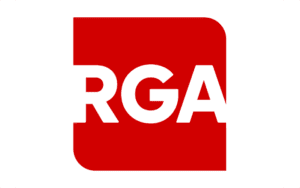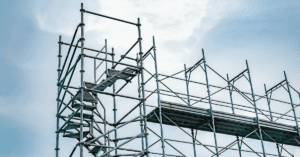A Perfect Storm: Looking Ahead to the 2024 Hurricane Season

This post is part of a series sponsored by CoreLogic.
The Atlantic and Gulf Coasts of the United States are officially in hurricane season, which every year starts on June 1 and lasts through the end of November. People across affected areas, from Texas to Maine, are on high alert, especially following an active 2023 hurricane season.
With a long hurricane season ahead, property insurance carriers and restoration contractors must prepare their operations for an uptick in hurricane-related claims and restoration jobs. They must understand risks specific to the 2024 season, which the National Oceanic and Atmospheric Administration (NOAA) predicts will rival, or even surpass, that of 2023.
There is a high probability that La Niña conditions will return to the Pacific Ocean, which would decrease vertical wind shear in the Atlantic Ocean. This, combined with potential record setting sea surface temperatures, makes conditions ripe for strong hurricanes. The NOAA 2024 Hurricane Season Outlook forecasts 17 to 25 named storms, 8 to 13 hurricanes, and four to seven major — or Category 3 or above — hurricanes.
This is only scratching the surface of the 2024 hurricane season, though. Understanding the weather concepts and knowing general numbers isn’t enough for businesses and homeowners to adequately prepare for hurricane season. The 2024 CoreLogic Hurricane Risk Report offers a comprehensive analysis of hurricane risk in the U.S., providing essential insights for property owners, insurers, and policymakers.
Leveraging Risk Assessments to Establish Mitigation and Recovery Strategies
Insurance carriers and their partners must understand types of risks, and the level of these risks, to properties and communities in every area they provide coverage. They must target locations where structures will be most affected, and what type of damage properties are susceptible to. Wind damage, for example, is different in nature to damage caused by storm surge flooding.
That’s where CoreLogic® — the leading provider of data and workflow technology solutions for the property insurance ecosphere — comes in. Every year, CoreLogic compiles a detailed hurricane risk report to quantify and explain the magnitude of hurricane risk to the U.S. Atlantic and Gulf States.
Based on CoreLogic’s report, businesses that serve properties can make informed decisions to establish effective and practical plans for mitigation and recovery. Allocating and distributing the right types of resources to the right places will reduce the catastrophic financial impact that hurricanes can leave in their wake.
At a Glance: The CoreLogic 2024 Hurricane Risk Report
CoreLogic experts created the 2024 Hurricane Risk Report using proprietary data and technology, including peril-specific risk models, to quantify the hazard of wind and storm surge risk to affected areas.
This year’s report identifies more than 32.7 million residential properties across the U.S. Gulf and East coasts at moderate or greater risk of hurricane wind damage, with a total reconstruction cost value (RCV) of $10.8 trillion. On top of wind damage, approximately 7.7 million of these properties are at risk of storm surge flooding, with an RCV of $2.3 trillion.
The region with the highest probability of a hurricane making landfall in the U.S. is Southeastern Florida, home to Miami-Dade County.
Apply CoreLogic Risk Report Findings
The 2024 CoreLogic Hurricane Risk Report does more than just reveal high-level information. It presents drilled-down data alongside explanations and analysis so that readers can wrap their heads around all the factors that go into quantifying risk. does more than just reveal high-level data. It presents data alongside explanations and analysis so that readers can wrap their heads around all the factors that go into quantifying risk.
There are so many layers to hurricanes, so insurance carriers and restoration contractors must have a multi-dimensional understanding of these perils and how they will likely impact their coverage zones throughout the rest of the year. Approaching the season with a comprehensive understanding of risk is important because underestimating the impact of natural catastrophes creates a discrepancy between the expected and actual risk, potentially resulting in a financial situation where insurance payouts exceed the premiums collected. Resulting scenarios can also leave carriers and restorers unequipped to carry out promises to policyholders.
Download the full 2024 CoreLogic Hurricane Risk Report to discover the relevant data and insights about the current hurricane season. By applying this knowledge to your hurricane preparation and response plans, you will accelerate recovery for people everywhere.
©2024 CoreLogic, Inc. All rights reserved. While all of the content, data, and information is believed to be accurate, CoreLogic makes no guarantee, representation, or warranty, express or implied, including but not limited to as to the completeness, accuracy, applicability, or fitness, in connection with the content, data, or information or the products referenced herein and assumes no responsibility or liability whatsoever for the content, data, information, or products referenced herein or any reliance thereon. CoreLogic® is the registered trademark of CoreLogic, Inc. or its affiliates or subsidiaries.
Topics
Catastrophe
Natural Disasters
Windstorm
Hurricane
Interested in Catastrophe?
Get automatic alerts for this topic.





